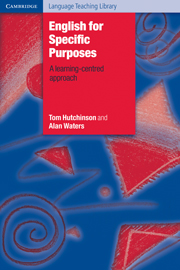8 - The syllabus
Published online by Cambridge University Press: 03 May 2010
Summary
I must Create a System, or be enslaved by another Man's.
(William Blake,‘Jerusalem’)In this first chapter on the applications of a course design model, we shall be looking at the syllabus and considering the following questions:
1 What do we mean by a syllabus?
2 Why should we have a syllabus?
3 On what criteria can a syllabus be organised?
4 What role should a syllabus play in the course design process?
What do we mean by a syllabus?
Most teachers might regard this as an unnecessary question. A syllabus is a document which says what will (or at least what should) be learnt. But, in fact, there are several different ways in which a syllabus can be defined. This stems from the fact that the statement of what will be learnt passes through several different stages before it reaches its destination in the mind of the learner. Each stage on its route imposes a further layer of interpretation.
The evaluation syllabus
As we have said, at its simplest level a syllabus can be described as a statement of what is to be learnt. This kind of syllabus will be most familiar as the document that is handed down by ministries or other regulating bodies. It states what the successful learner will know by the end of the course. In effect, it puts on record the basis on which success or failure will be evaluated. Thus we might refer to this as an evaluation syllabus. It reflects an official assumption as to the nature of language and linguistic performance.
- Type
- Chapter
- Information
- English for Specific Purposes , pp. 80 - 95Publisher: Cambridge University PressPrint publication year: 1987



